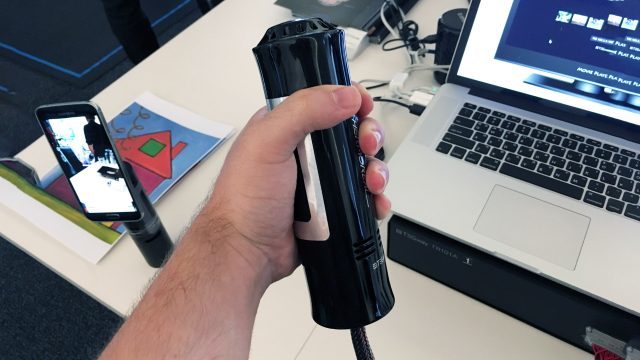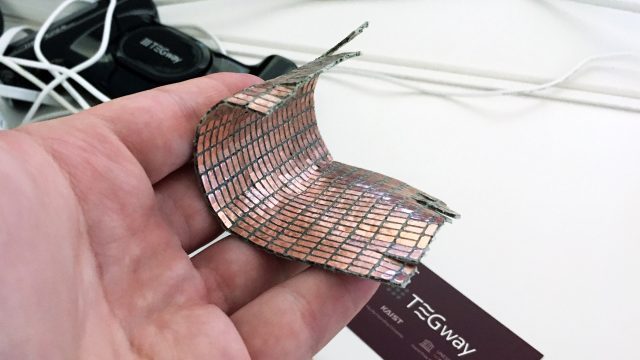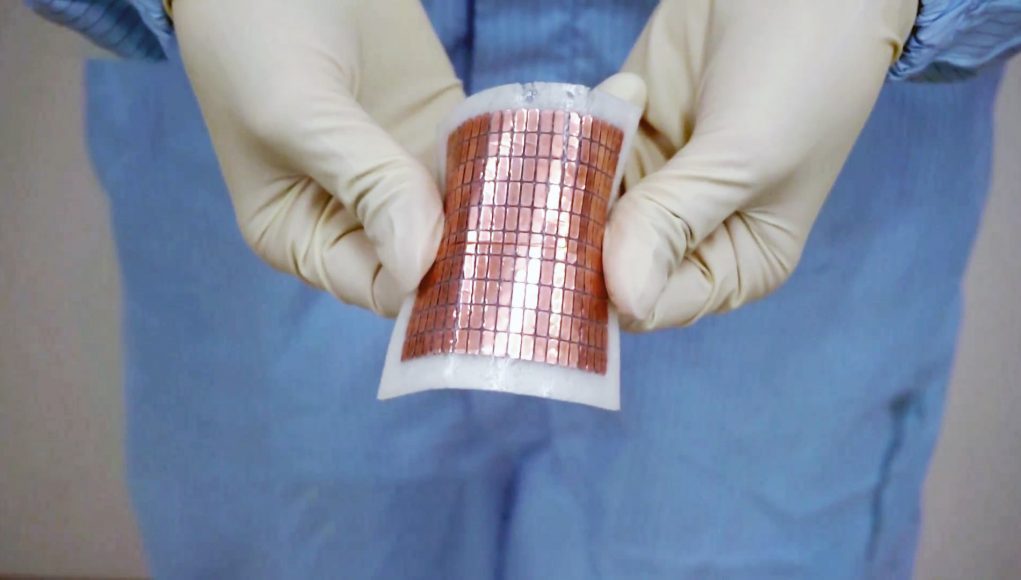Korea-based TEGway is developing ThermoReal, a thermoelectric array which can generate heat and cold with impressively low latency. The flexible nature of ThermoReal could make it suitable for integration into VR controllers, gloves, and more.
I’ve tried a few different thermal haptic devices throughout the course of my VR reporting, but nothing that really impressed me. Usually the effects are hard to notice because they don’t feel particularly hot or cold, and they take so long to activate that it’s hard to sell the illusion that the effect is being caused by something happening in the virtual world.
I got to try the ThermoReal thermoelectric skin at the Vive X Batch 2 demo day in San Francisco this week and it’s led me to become a believer in the value of thermal haptics for the first time. That’s thanks to three things:
Latency
ThermoReal—which is a thermoelectric generator based on something called the Seebeck Effect—is impressively quick to react. I held a prototype wand which had the ThermoReal skin embedded in it as I watched a video of a man jumping into a river. The moment he plunged into the water I could feel the wand get cold to the touch. Another video showed a car blowing up and the heat effect kicked in almost immediately with very little ‘spin up’ time. Keep an eye on the ‘thermal imaging’ section of the clip above to see how quickly the device changes temperatures.

In addition to hot and cold, the device can do both at the same time in close proximity, which is perceived as an amplified ‘pain’ effect compared to just using heat alone.
Our sense of temperature is not nearly as latency-sensitive as our senses of sight or hearing, but thermal haptics must still be fast enough to help our brains connect what we’re seeing with what we’re feeling. For many potential thermal haptic scenarios, it feels like ThermoReal has passed an important latency threshold that helps sell that illusion.
Amplitude
It isn’t just the speed of the hot or cold effect, but the extent of it too. I was impressed with how the device could achieve its maximum level of cold so quickly.
Even more than the cold effect, the heat effect was so great that I had to loosen my grip on the ThermoReal prototype at times; I was honestly concerned the device could burn me. I asked one of the creators if there was any risk of injury and was told that the device would only get up to 4°C hotter than body temperature. Based on how hot it felt, I’m still skeptical of that claim, though it’s possible that the rate of heat increase (rather than the measured temperature itself) could signal to my brain a more severe sensation of heat; I’ll be interested to learn more about the minimum and maximum possible temperatures of the device.
Form-factor
 Thermoelectric generators like ThermoReal are not new. What is new, says TEGway, is the form-factor of their device. It takes the form of a flexible skin-like array of conductors which can be curved and wrapped around various surfaces, which could make it perfect for integration into VR controllers, gloves, or even suits.
Thermoelectric generators like ThermoReal are not new. What is new, says TEGway, is the form-factor of their device. It takes the form of a flexible skin-like array of conductors which can be curved and wrapped around various surfaces, which could make it perfect for integration into VR controllers, gloves, or even suits.
They say it’s the “world-first ‘Stand-Alone’ high performance flexible [thermoelectric device].
– – — – –
For any good haptic device, figuring out how to use it is always the hard part. For ThermoReal, there’s a number of promising applications beyond simply making the player feel hot in a hot environment and cold in a cold environment.
As a few examples to get your imagination churning, the speed and amplitude of the temperature effects should be suitable for conveying the temperature of objects held in the user’s hand. That could mean, for instance, allowing the player to feel it when their energy-weapon has overheated, or feel the cold of a snowball when held in their hand.
The company also says the ThermoReal skin can create the temperatures in discrete areas, potentially allowing for the feeling of virtual objects moving across the player’s hand. You can imagine a sticky snail crawling across your hand, or possibly even larger creatures—like a snake coiling around your leg—if the tech was integrated into a suit-like device covering a larger portion of the player’s body.







